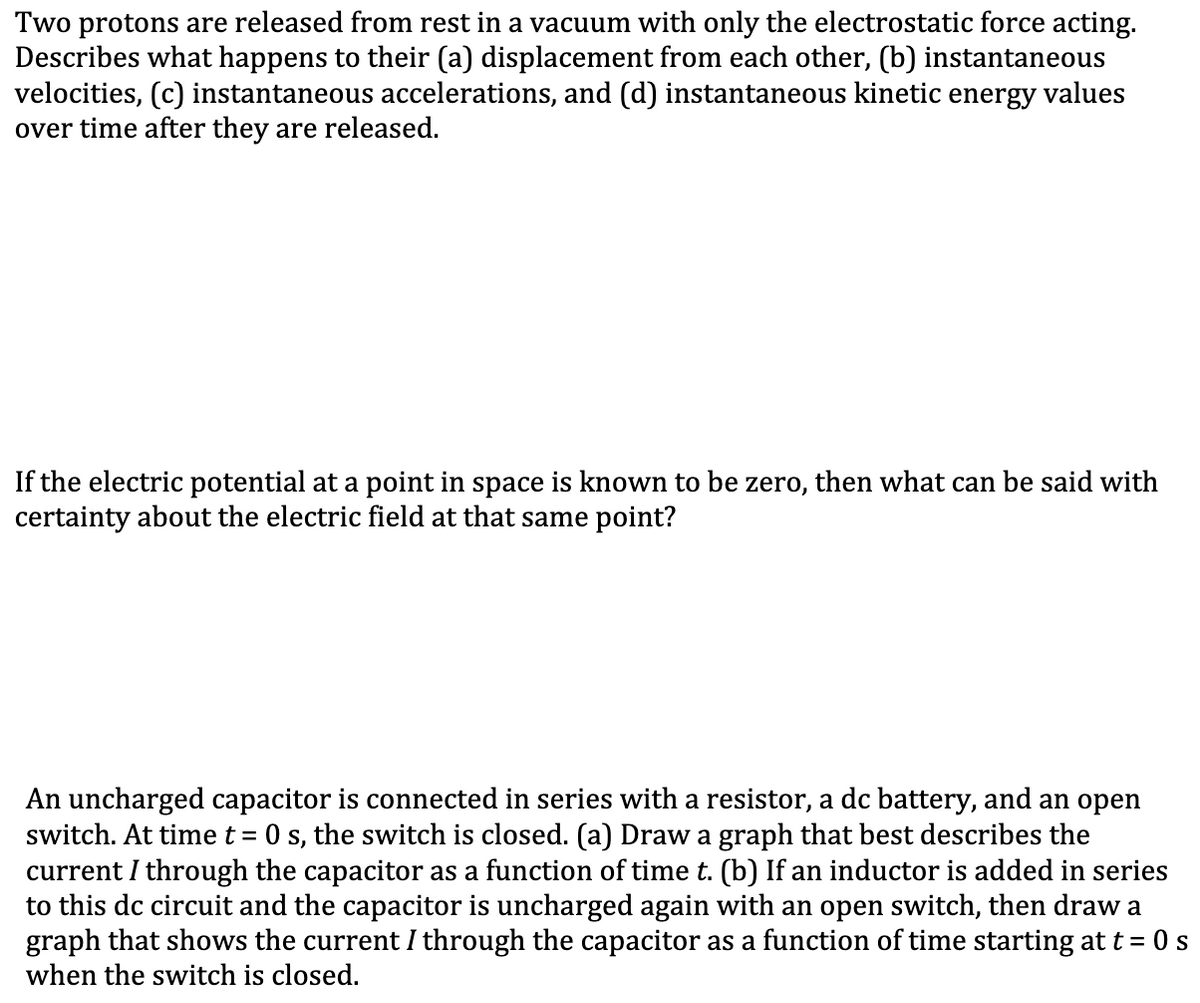Two protons are released from rest in a vacuum with only the electrostatic force acting. Describes what happens to their (a) displacement from each other, (b) instantaneous velocities, (c) instantaneous accelerations, and (d) instantaneous kinetic energy values over time after they are released.
Two protons are released from rest in a vacuum with only the electrostatic force acting. Describes what happens to their (a) displacement from each other, (b) instantaneous velocities, (c) instantaneous accelerations, and (d) instantaneous kinetic energy values over time after they are released.
Related questions
Question
100%

Transcribed Image Text:Two protons are released from rest in a vacuum with only the electrostatic force acting.
Describes what happens to their (a) displacement from each other, (b) instantaneous
velocities, (c) instantaneous accelerations, and (d) instantaneous kinetic energy values
over time after they are released.
If the electric potential at a point in space is known to be zero, then what can be said with
certainty about the electric field at that same point?
An uncharged capacitor is connected in series with a resistor, a dc battery, and an open
switch. At time t = 0 s, the switch is closed. (a) Draw a graph that best describes the
current I through the capacitor as a function of time t. (b) If an inductor is added in series
to this dc circuit and the capacitor is uncharged again with an open switch, then draw a
graph that shows the current I through the capacitor as a function of time starting at t = 0s
when the switch is closed.
Expert Solution
This question has been solved!
Explore an expertly crafted, step-by-step solution for a thorough understanding of key concepts.
This is a popular solution!
Trending now
This is a popular solution!
Step by step
Solved in 4 steps
